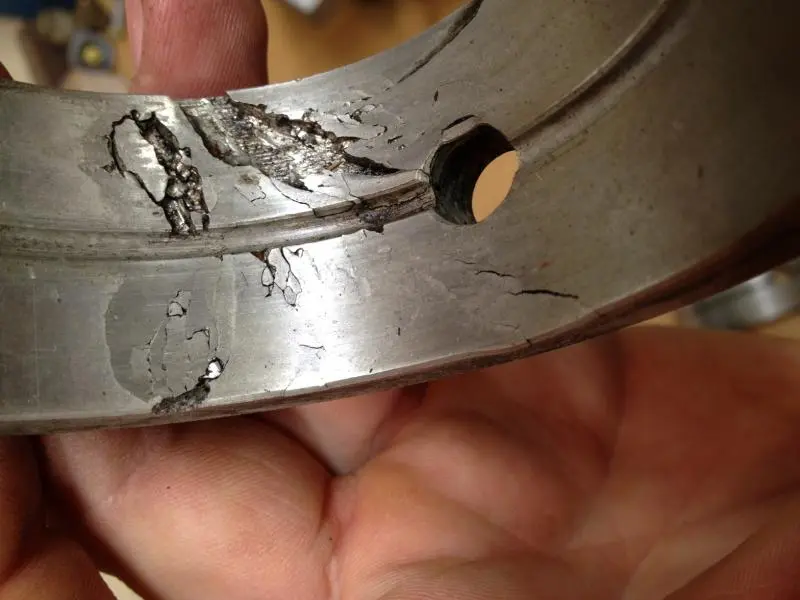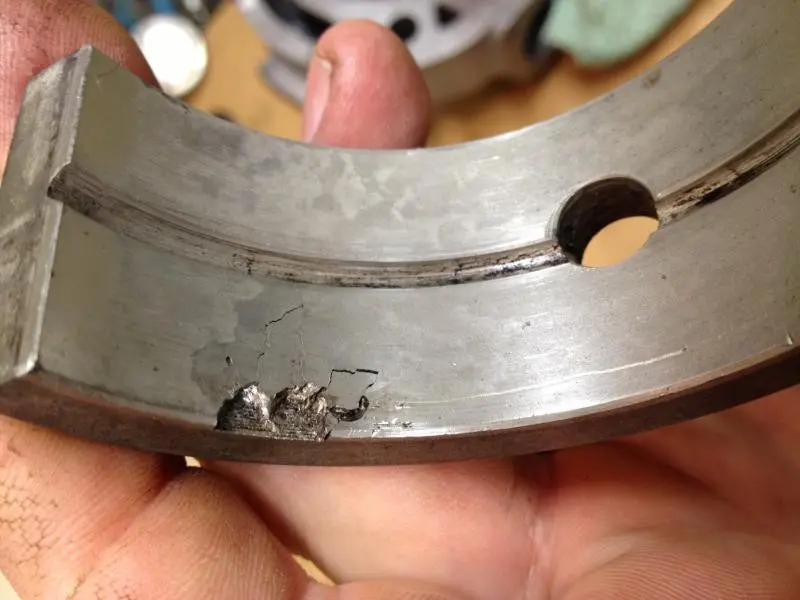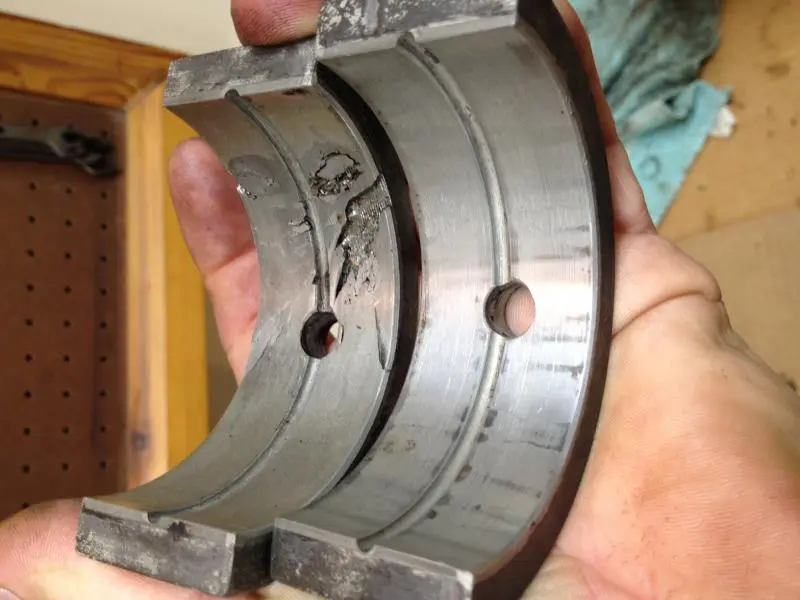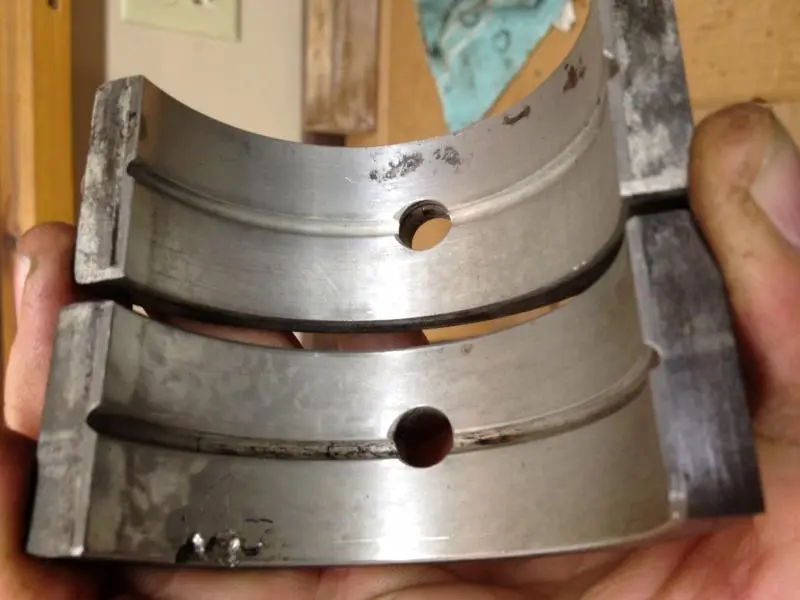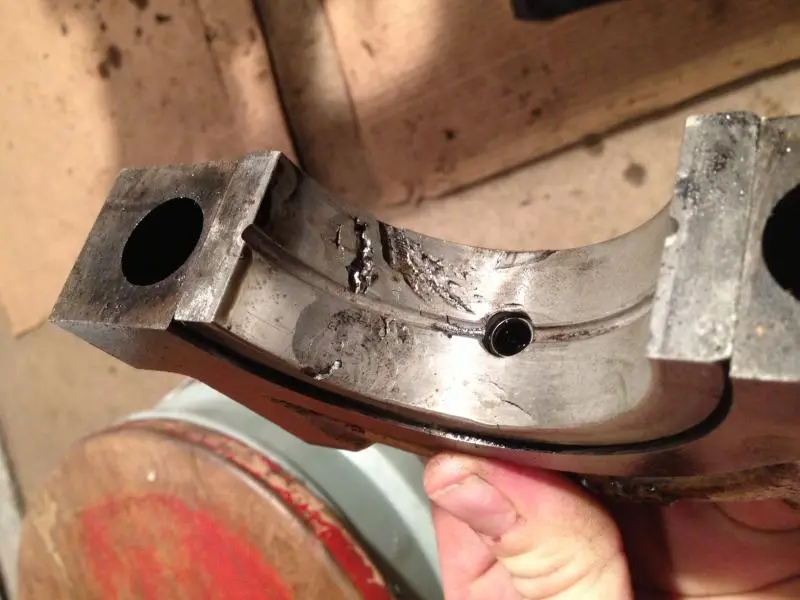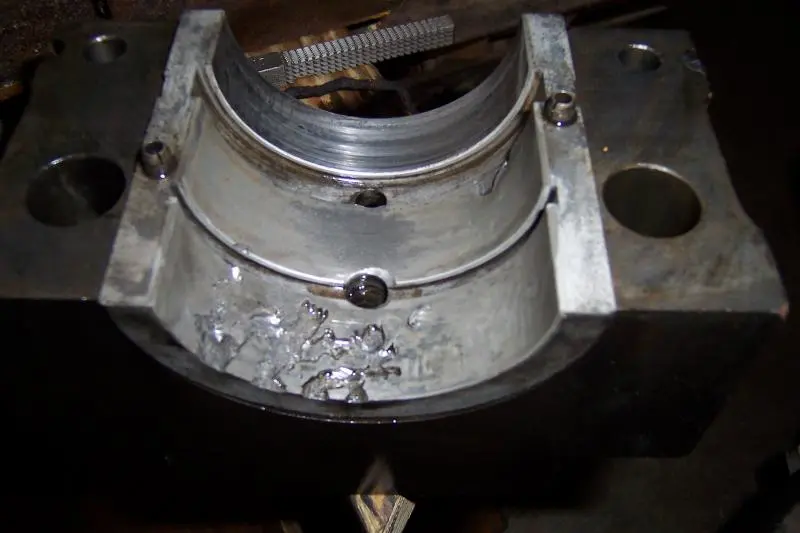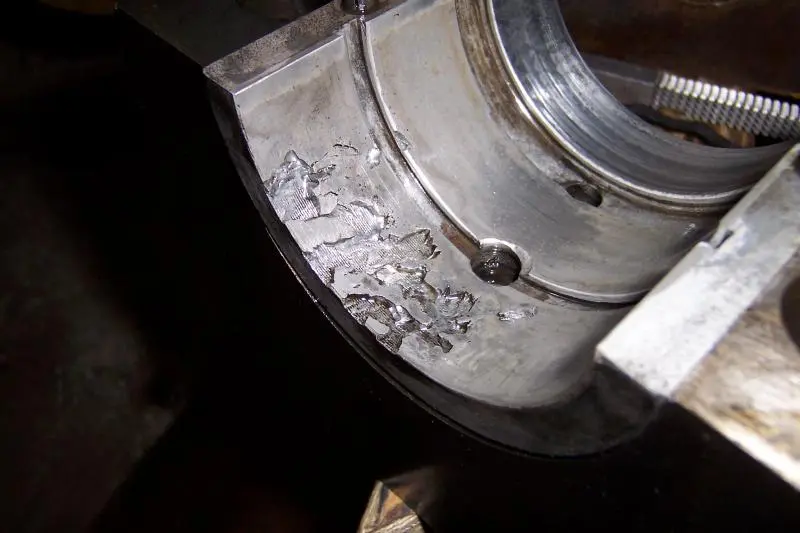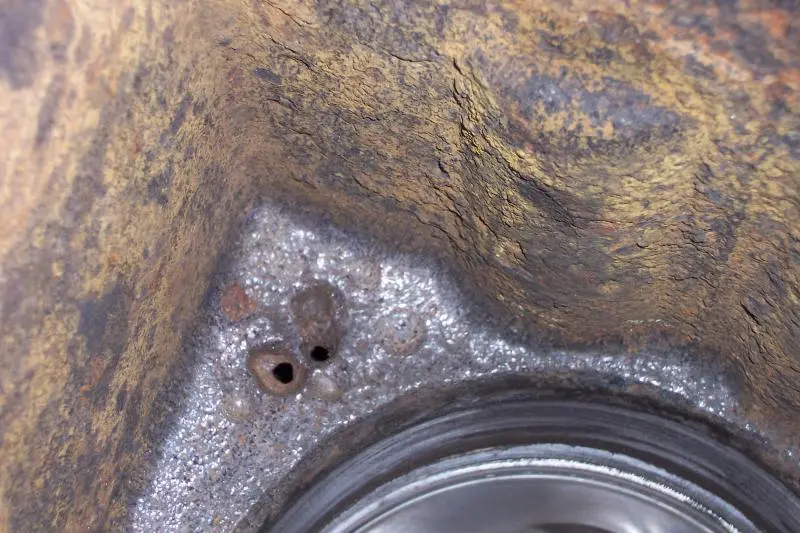Reply to Andrew:
That looks to me like typical erosion caused by water in the oil.
Thanks for the replies everybody, I appreciate the help. I'm mainly curious about what caused the damage so as to avoid it happening again, if possible. Some specs from teardown -
Crankshaft endplay .008" (spec .009"-.015", max allowable .020")
Rod bearing clearance, aluminum .007" (spec .0055"-.008", max allowable .013")
Main bearing clearance, Babbitt .006" (spec .003"-.0055", max allowable .012")
Crankshaft main journals measure 2.748"-2.749" or .001" out of round with no taper (new spec 2.749"-2.750" with max. out of round .006", max. wear .007")
Crankshaft rod journals measure 2.623"-2.625" or .002" out of round with no taper (new spec 2.624"-2.625" with max. out of round .006", max. wear .007")
I have not had the crank checked by a machine shop yet for bends, twists, etc. but I do like what I see with the above measurements. Again, I have no idea exactly how long this engine sat with water in the sump but I would guess at least a couple of years from the story the previous owner told me. Even the pistons, pins, and rings show no real signs of wear anywhere and all clearances were still well within new spec. so we decided to find good replacement block and head castings and see if we could take all of the good "insides" combined with new liners, rings, and other minor parts as needed to make a running engine again - we'll see.:crazy:
A few better pics of the old bearings in question, first pic is a better view of the original bearing I inquired about, I like Andrew's description of "erosion" because it appears that something "washed away" some of the babbitt, and the darker discoloration around the missing and cracking material seems to indicate that something was breaking down the Babbitt. The spots that appeared to be hammer blows are sections of Babbitt that have cracked and are shifting away from the backing. Second pic is the other lower shell that began losing material, again both of the bad bearings were lower shells and their upper counterparts still looked pristine. Third and fourth pics are the two bearing sets contrasting the lower damaged shells next to their better upper shells, notice in the third pic the upper shell has visible lines going across it, those are high spots that were in heavier contact with the main journal, you can feel them when you run your finger across the surface - kind of strange to have a textured surface like that on a main bearing.
